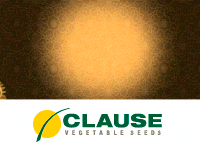Costa Rica: postharvest handling against food waste
Given the fact that now a third of the food produced worldwide is wasted, the Inter-American Institute for Cooperation on Agriculture (IICA) recently delivered in the capital of Costa Rica, a technical forum to provide producers interested basics of post-harvest management, to help reduce food losses in food chains.
The forecast for 2050 of a world population of nine thousand million people entails the need to increase food production by 60% to cover the huge demand that will be generated.
This difficult scenario is compounded by the fact that a third of the food produced worldwide is wasted, since, as noted Director of Technical Cooperation of IICA, Salvador Fernández, “an increase in production will not be enough to cope with future demand for food”.
Wasted third of the food produced globally represent losses reaching 700 million annually in developing countries
As Kurt Manrique, a specialist in Innovation from IICA, says food losses are mostly due to the mishandling of the product in the field (selection of the wrong variety, poor quality seeds, poor irrigation and fertilization) and inadequate post-harvest handling (poor selection and drying of the product, inadequate transport and packaging, and poor storage conditions). The latter is the one that has been addressed in the technical forum “reduction in losses and food waste: Basics of postharvest handling and experience of the Food Bank of Peru“, which was broadcast to all countries in the hemisphere and which seeks to strengthen the technical capacities of countries to offset the loss of food.
To reduce post-harvest food losses is recommended that producers make a good selection of harvested product, ensure a good grain drying and avoid excessive handling and blows products
Calculations in traditional areas in Paraguay indicate that family farming in that country in the post-harvest loses 25-50% of fruits and vegetables, between 40-45% of roots and tubers, 25-40% corn and 15 -25% in legumes. These data were presented by Monica Gavilan, Director of Career Agri-Food Engineering and Coordinator of the MSc Management of Food Security and Nutrition at the Faculty of Agricultural Sciences of the National University of Asuncion, Paraguay.
In this context are particularly relevant food banks. In Latin America there are 15 food banks, which in 2015 rescued and distributed 195 million kilos of food to more than 12.700 organizations
To Marita Guzman, General Manager of the Food Bank of Peru, the work of his organization has helped to alleviate hunger and improve nutrition of the beneficiaries. It also promotes the care of the environment, the spirit of solidarity and reduce food waste.
This year, IICA, in coordination with the Ministry of Agriculture and Irrigation (MINAGRI) of Peru, has implemented Assessment Methodology Agrifood Chains (MECA) in the chain of yellow corn.
MECA identifies the critical points that lead to the loss of food in the food chains and the development of proposals to improve efficiency
This Assessment Methodology agrifood chains will also be applied in Uruguay and Colombia, and is expected to have an updated edition of the handbook by the end of 2016.
160926_nociones básicas para manejo poscosecha
Source: IICA








